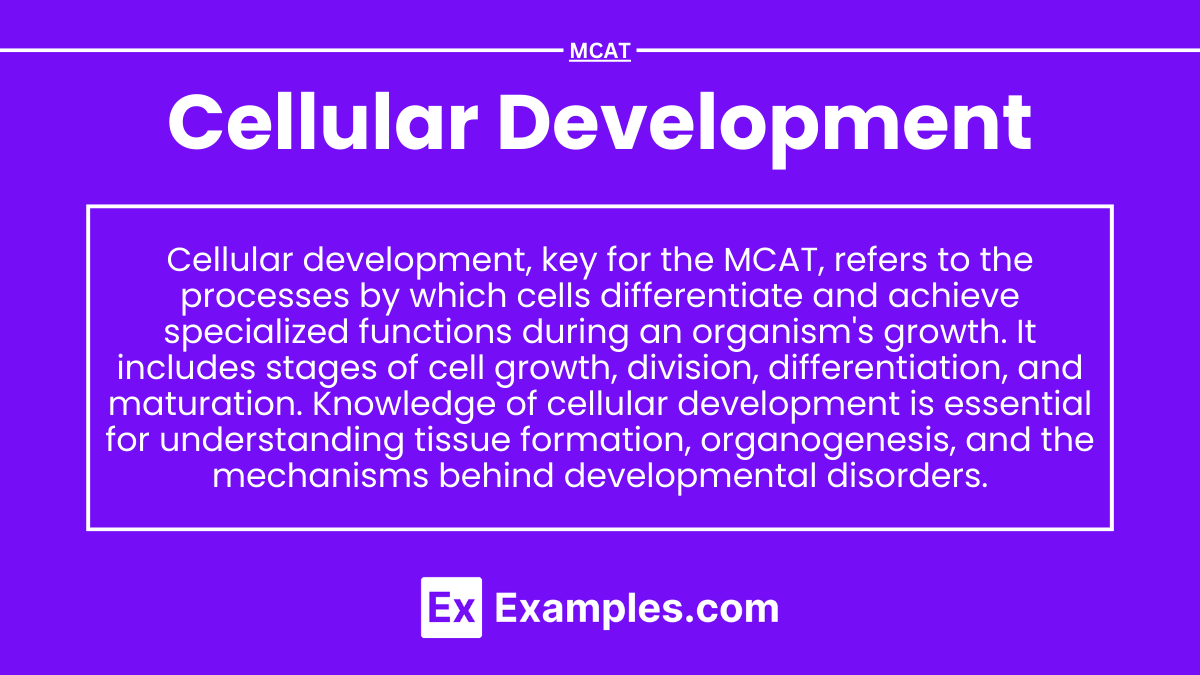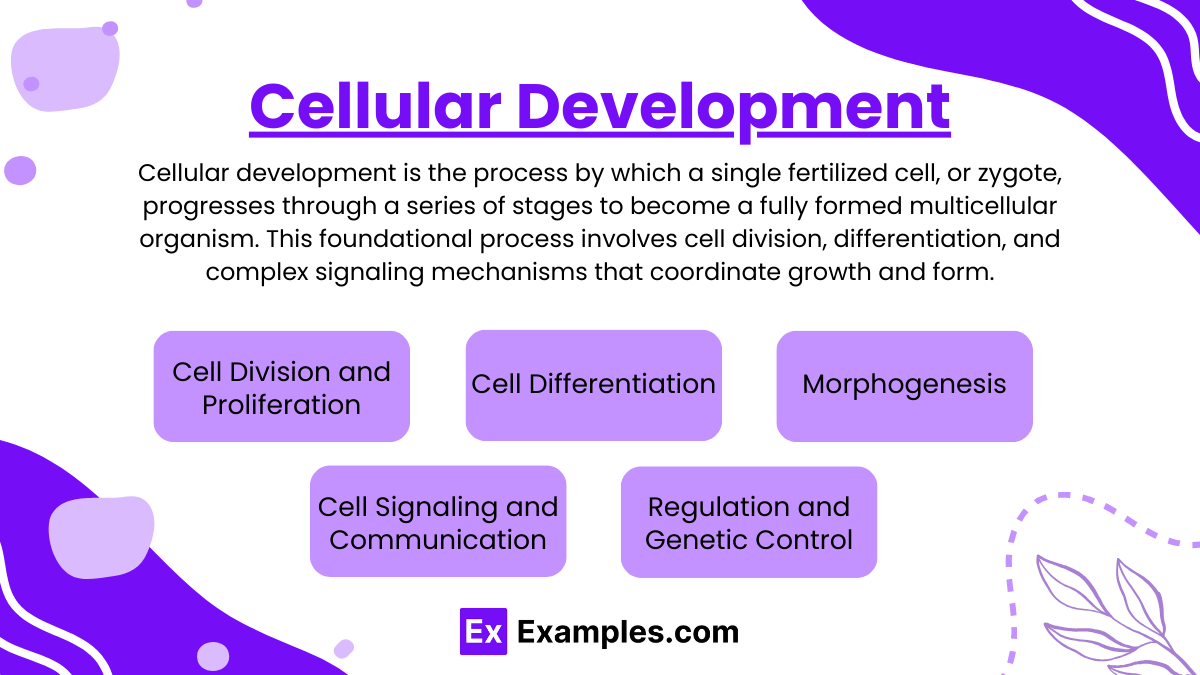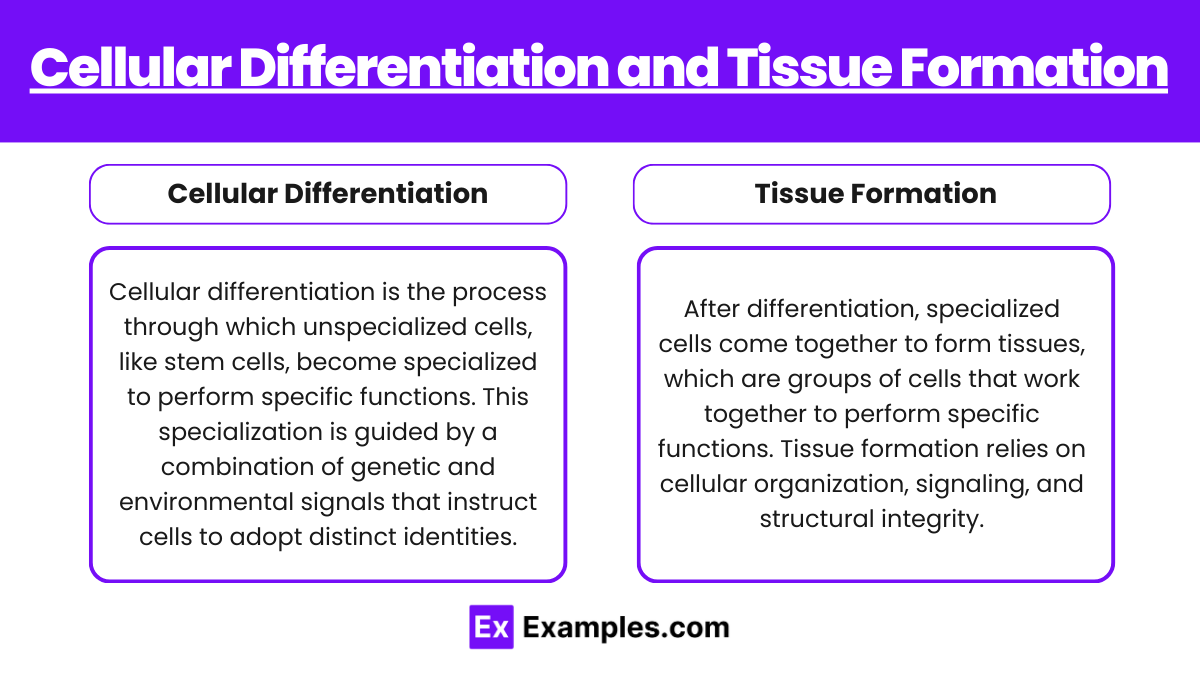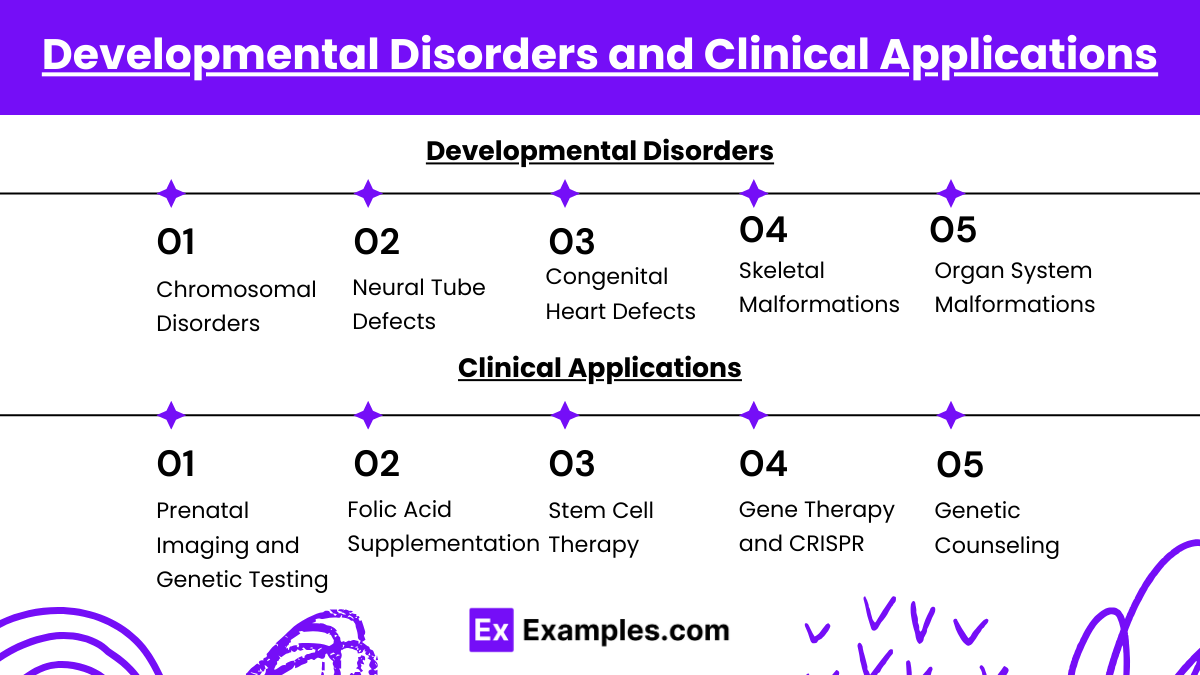Preparing for the MCAT requires a thorough understanding of cellular development, a vital component of the Cellular and Molecular Biology foundation. Mastery of cell differentiation, growth, and signaling pathways is essential. This knowledge provides insights into tissue formation, regeneration, and developmental biology, crucial for achieving a high MCAT score.
Learning Objective
In studying "Cellular Development" for the MCAT, you should aim to understand the processes by which cells grow, differentiate, and form complex tissues. Analyze the stages of cellular development, including signal transduction, gene expression regulation, and the role of stem cells in differentiation. Evaluate mechanisms of cellular communication and how signaling pathways drive cell fate decisions during tissue and organ formation. Additionally, explore the impact of genetic and environmental factors on cellular development and how disruptions can lead to developmental disorders. Apply this knowledge to interpret experimental data and clinical scenarios in MCAT practice passages, enhancing your readiness for the exam.
Foundations of Cellular Development
Cellular development is the process by which a single fertilized cell, or zygote, progresses through a series of stages to become a fully formed multicellular organism. This foundational process involves cell division, differentiation, and complex signaling mechanisms that coordinate growth and form. Here are the key concepts:
Cell Division and Proliferation:
Mitosis: The fertilized egg undergoes multiple mitotic divisions, producing identical cells for tissue and organ development.
Cleavage: Early cell divisions form smaller cells (blastomeres) without growth, leading to the formation of the morula and then the blastocyst.
Cell Differentiation:
Specialization: Cells become specialized for specific functions, starting from pluripotent states where they can become various cell types.
Germ Layers: Cells organize into three primary layers during gastrulation:
Ectoderm: Forms skin and nervous system.
Mesoderm: Develops into muscles, bones, and blood vessels.
Endoderm: Becomes internal organs like the digestive system.
Morphogenesis:
Tissue and Organ Formation: Cells move, adhere, and communicate to shape organs and tissues.
Apoptosis: Programmed cell death removes unneeded cells, like those between fingers and toes in limb formation.
Cell Signaling and Communication:
Inductive Signals: Cells use signaling molecules to influence nearby cells, directing differentiation and positioning.
Gradients: Morphogen gradients provide positional cues that help cells determine their location and fate within the embryo.
Regulation and Genetic Control:
Gene Expression: Genes control cell division, differentiation, and tissue development.
Transcription Factors: These proteins regulate genes, guiding cells along specific developmental paths.
Epigenetics: Chemical modifications to DNA and histones help maintain cell identity throughout development.
Signal Transduction and Gene Regulation in Development
Signal transduction and gene regulation are central to cellular development, guiding cells through differentiation, tissue formation, and morphogenesis. These processes ensure that cells respond appropriately to their environment and adopt specific roles in the developing organism.
Signal Transduction:
Signal transduction is the process by which cells respond to external signals, converting them into a cascade of molecular events that affect cellular behavior.
Receptors and Ligands: Signal transduction begins when a signaling molecule, or ligand, binds to a receptor on the cell surface or inside the cell. Common receptors include G-protein-coupled receptors, receptor tyrosine kinases, and nuclear receptors.
Second Messengers: Binding of the ligand activates intracellular signaling molecules known as second messengers (e.g., cAMP, Ca²⁺). These molecules amplify and relay the signal to target proteins within the cell.
Signal Cascades: Activated receptors trigger a series of protein interactions and phosphorylation events. Protein kinases play a crucial role in transmitting and amplifying the signal, leading to changes in cellular activities.
Cellular Responses: Signal transduction pathways ultimately lead to cellular responses such as proliferation, differentiation, apoptosis, or migration. In development, these responses help shape tissues and organs.
Gene Regulation:
Gene regulation involves the control of gene expression to ensure that specific genes are activated or repressed at the right time and in the correct cells.
Transcription Factors: Proteins known as transcription factors bind to specific DNA sequences and control the transcription of genes. Key developmental transcription factors include HOX, SOX, and PAX, which are crucial for patterning and cell identity.
Epigenetic Modifications: Chemical modifications such as DNA methylation and histone acetylation play a role in regulating gene expression without altering the DNA sequence. These modifications help lock cells into specific developmental pathways.
Enhancers and Promoters: Regulatory regions of DNA, such as enhancers and promoters, are crucial for gene activation. Enhancers can interact with promoters to boost gene transcription, even if they are located far from the gene they regulate.
Feedback Loops: Positive and negative feedback mechanisms are critical in development, helping to maintain or adjust gene expression levels. This fine-tuning ensures precise cell signaling and differentiation timing.
Cellular Differentiation and Tissue Formation
Cellular differentiation and tissue formation are essential processes in development, allowing a single fertilized cell to give rise to the diverse array of specialized cell types and organized tissues needed to form a complex organism.
Cellular Differentiation:
Cellular differentiation is the process through which unspecialized cells, like stem cells, become specialized to perform specific functions. This specialization is guided by a combination of genetic and environmental signals that instruct cells to adopt distinct identities.
Stem Cells: Undifferentiated cells that can become various cell types. Embryonic stem cells are pluripotent, while adult stem cells are more limited.
Gene Expression Control: Specific genes are activated or repressed to establish cell identity, guided by transcription factors and epigenetic changes.
External Signals: Growth factors, signaling molecules, and cell interactions direct cells toward specific fates.
Commitment and Specialization: Cells move through stages of commitment, eventually becoming fully specialized for specific functions.
Tissue Formation:
After differentiation, specialized cells come together to form tissues, which are groups of cells that work together to perform specific functions. Tissue formation relies on cellular organization, signaling, and structural integrity.
Types of Tissues: Includes epithelial (protective layers), connective (support structures), muscle (movement), and nervous (signal transmission).
Cell Adhesion and Communication: Cells are held together by adhesion molecules and communicate through signaling to coordinate tissue functions.
Extracellular Matrix (ECM): A supportive network that organizes cells and affects cell behavior.
Morphogenesis: Cells organize into shapes and structures, guided by genetic factors and signaling pathways.
Developmental Disorders and Clinical Applications
Developmental disorders in cellular development arise from disruptions in the processes that guide cell division, differentiation, and tissue formation. These disorders can affect various bodily systems and often have long-term health consequences. Clinical applications focus on diagnosing, managing, and potentially preventing these conditions.
Types of Developmental Disorders in Cellular Development:
Chromosomal Disorders: Errors in chromosome number or structure, such as Down syndrome (Trisomy 21), Turner syndrome (monosomy X), and Klinefelter syndrome (XXY), impact cell division and lead to systemic developmental issues.
Neural Tube Defects: Conditions like spina bifida and anencephaly result from incomplete neural tube closure due to issues in early cellular differentiation and morphogenesis.
Congenital Heart Defects: Arise from improper cell signaling and differentiation during heart tissue formation, leading to defects such as septal abnormalities.
Skeletal Malformations: Conditions like congenital limb deformities and skeletal dysplasia occur from errors in bone cell differentiation and tissue formation.
Organ System Malformations: Organ-specific abnormalities, such as congenital diaphragmatic hernia, stem from disruptions in organogenesis and tissue differentiation within the affected systems.
Clinical Applications in Diagnosis and Treatment:
Prenatal Imaging and Genetic Testing: Techniques like ultrasound, amniocentesis, and chorionic villus sampling (CVS) detect chromosomal abnormalities and structural malformations during pregnancy.
Folic Acid Supplementation: Taking folic acid before and during early pregnancy reduces the risk of neural tube defects by supporting proper cellular differentiation.
Stem Cell Therapy: Emerging regenerative treatments aim to repair or replace damaged tissues in conditions like congenital heart disease and certain skeletal malformations.
Gene Therapy and CRISPR: Experimental approaches to correct genetic mutations that underlie developmental disorders.
Genetic Counseling: Provides families with risk assessments and management strategies for genetic and developmental conditions.
Examples
Examples 1: Role of Stem Cells in Tissue Repair
Stem cells in bone marrow differentiate into various blood cell types, maintaining and repairing blood and immune cells throughout life. This example highlights the concept of cellular differentiation and the role of multipotent stem cells in regeneration.
Examples 2: Wnt Signaling in Embryonic Development
Wnt signaling is crucial for the development of body axes and organ patterning during embryogenesis. Disruptions in this pathway can lead to developmental abnormalities, such as limb defects, demonstrating the importance of signaling pathways in guiding cell fate.
Examples 3: HOX Genes and Body Patterning
HOX genes control the formation of specific body segments along the head-to-tail axis. Mutations in HOX genes can cause congenital malformations, such as polydactyly (extra fingers or toes), illustrating how genetic regulation impacts cellular and tissue development.
Examples 4: Environmental Influence: Fetal Alcohol Syndrome
Exposure to alcohol during pregnancy disrupts neural development, leading to fetal alcohol syndrome, characterized by facial abnormalities, growth deficiencies, and cognitive impairments. This example underscores how environmental factors affect cellular development and lead to congenital disorders.
Examples 5: Use of CRISPR in Developmental Research
CRISPR technology allows scientists to edit genes and study their functions in cellular development, such as investigating the effects of gene knockouts on cell differentiation. This tool is crucial for advancing knowledge in developmental biology and has potential therapeutic applications.
Practice Questions:
Question 1
Which type of stem cell has the potential to differentiate into any cell type, including placental cells?
A) Pluripotent
B) Multipotent
C) Totipotent
D) Unipotent
Answer: C) Totipotent
Explanation:
Totipotent stem cells, such as the zygote and the cells from early embryonic divisions, can differentiate into all cell types, including both embryonic and extraembryonic (placental) cells. Pluripotent cells can give rise to any cell type in the body but not placental cells, while multipotent cells are more limited, and unipotent cells can only produce one cell type.
Question 2
What is the primary role of HOX genes in development?
A) Directing the development of body segments
B) Initiating cell division
C) Forming the cell membrane
D) Facilitating DNA replication
Answer: A) Directing the development of body segments
Explanation:
HOX genes are a group of regulatory genes that control the development and arrangement of body segments along the anterior-posterior axis. They provide positional information that guides cells in forming structures at specific locations, critical for body patterning. The other options (initiating cell division, forming the cell membrane, and facilitating DNA replication) are not functions of HOX genes.
Question 3
Which signaling pathway is primarily involved in regulating cell fate during early development and is known for its role in axis formation?
A) Wnt signaling
B) Ras signaling
C) Insulin signaling
D) Dopamine signaling
Answer: A) Wnt signaling
Explanation:
The Wnt signaling pathway is crucial for regulating cell fate and establishing body axes during embryonic development. It plays a central role in processes like organ patterning and cell differentiation. While Ras signaling is involved in cell growth and survival, insulin signaling regulates metabolism, and dopamine signaling is primarily related to neurotransmission, not cellular development.






